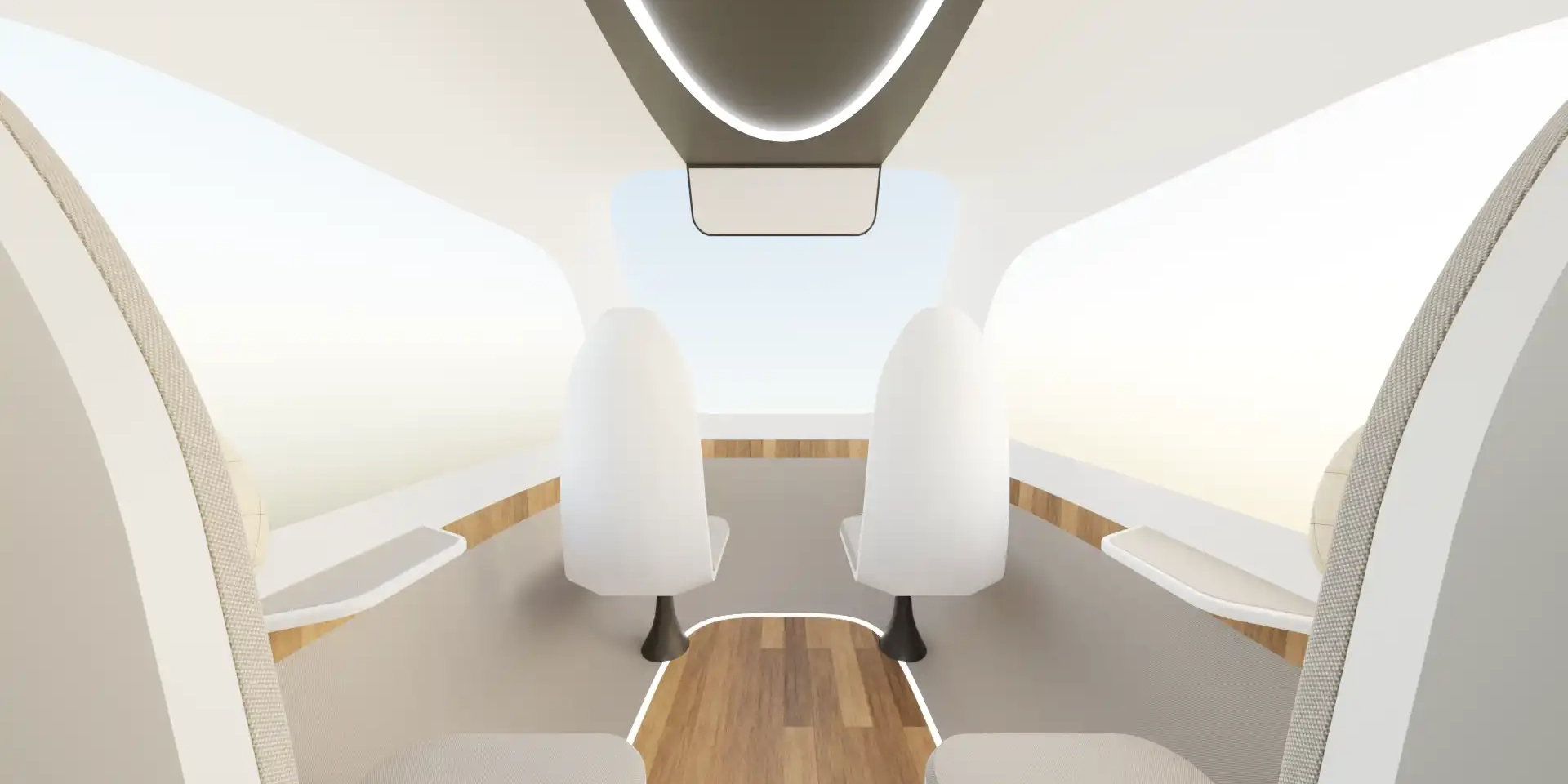⟵ back to the overview
Air-taxis, user-centered
Development of a passenger drone simulator
How should the customer experience of future drone flights be designed? In collaboration with the Technische Hochschule Ingolstadt, a virtual reality experience was created to address this question. Subjects have the opportunity to experience the entire journey from boarding, drone flight through to arrival at the destination terminal.

Challenge
Getting from A to B as quickly and conveniently as possible. This desire - initially quite simple - is unparalleled as a driver of human innovation and economic performance. While individual transport has conquered the road over the last century, and is now becoming increasingly autonomous, together with the Technische Hochschule Ingolstadt we have set our sights on a new domain: Time to conquer the skies!
„Innovative mobility solutions are needed to avert a traffic collapse. Even if most journeys are currently still made using public transport and cars, on-demand availability, digitalization/autonomization and electrification will be the driving forces of urban transport in the future.“ (Statista, 2023)
In addition to Mobility-as-a-Service offerings, more and more concepts are emerging that move away from congested roads. Air taxis offer a way to escape the gridlock on the roads. More and more manufacturers are working intensively on the technical implementation. There are „some flight-ready prototypes, but the flying taxis are still in the testing and approval process. The first commercial flights with (piloted) air taxis are not expected to take place until 2024 at the earliest.“ (Statista, 2023)
The task of human factors engineering in this context is to place future passengers at the center of development today. This raises the question of how a future customer experience should be designed when traveling by air cab. How long before departure do I have to be at the gate? Is there WiFi on board? And what happens to my luggage? These and other research questions are currently being investigated by the Technische Hochschule Ingolstadt in the AMI-FlyingIN2Air project. In order to be able to collect user data on the entire customer journey in addition to the drone flight itself - including boarding at the departure terminal and arrival at the Vertiport destination - a comprehensive VR experience was created in collaboration with proband15.
High-quality renders of the two vertiports in Munich and Ingolstadt as well as of the drone flight (for performance reasons, the display quality is lower during the actual VR experience)
Process
The VR environment simulates a drone flight from a conceivable future vertiport on the roof of Ingolstadt's North Station to Munich Airport. In a first step, the layout of the departure and arrival terminals of the respective vertiports was determined and appropriate interior and departure displays were added. Then, the external environment of the two airports was modeled as true to the location as possible and optimized for smooth rendering in VR. Finally, the interior of the drone was modeled. A view through the windows of the passenger drone shows the actual flight route - recorded with 360° videos during a real flight.
proband15 was a subcontractor of the Technische Hochschule Ingolstadt within the framework of the project AMI-FlyingIN2Air funded by the German Federal Ministry of Digital Affairs and Transport (grant number 45ILM1002G).
Further project partners are: Airbus Urban Mobility GmbH | City of Ingolstadt | Munich Airport International GmbH | amd.sigma GmbH | Regionalverkehr Oberbayern GmbH
⟵ more proband15